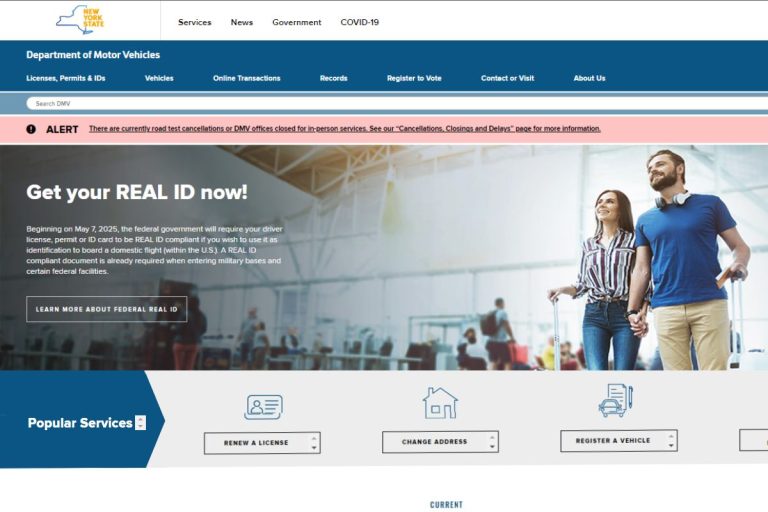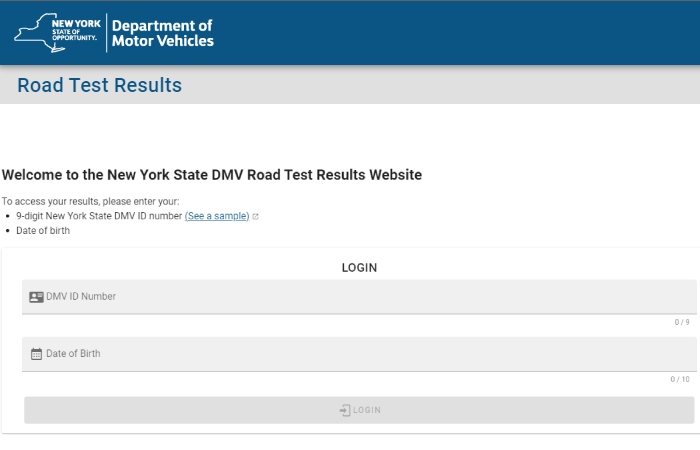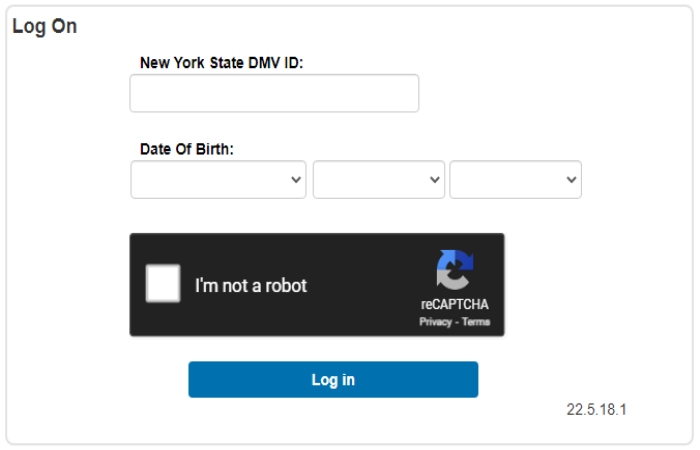pii_email_84e9c709276f599ab1e7
A quick director on how to fix the [pii_email_84e9c709276f599ab1e7] Outlook error
Email (electronic mail) is the best way to communicate with others while using online devices. It facilitates communication work and becomes the essential tool for marketing. Outlook error [pii_email_f4dd45e3a8280f2fe0f9] Persons use Microsoft Outlook all over the world. Meanwhile, this is the safest way to interact with others. Users can also use the Outlook account for business purposes. They will help the users equate with the customers and absorb their company’s studies. Occasionally errors act through sending the emails.
At this time, if you want to send an important message, understand the error message [pii_email_84e9c709276f599ab1e7]. It’s irritating, and you don’t know how to fix this error. It becomes a big problem to fix the error for users, and some techniques are required to fix it. Users can quickly fix this problem. Contracts try to understand this error and the method to fix it in simple steps.
Update the Version of Microsoft Outlook on your Computer
If you’re by an older version of Outlook, errors are very likely to occur. Try updating it to the most recent version and see if the issue has been fixed. Updating your Outlook version can also fix other errors. You can update it from the Windows panel.
Why the error [pii_email_84e9c709276f599ab1e7] occur?
![Why the error [pii_email_84e9c709276f599ab1e7] occur_](https://www.webtechgalaxy.com/wp-content/uploads/2022/02/Why-the-error-pii_email_84e9c709276f599ab1e7-occur_.jpg)
Outlook is the top networking platform. All your businesses and businesses are linked to email. If users encounter errors, their work will be affected. Various error codes will appear in your email, but this error occurs when your Microsoft account conflicts with other computer (PC) programs. The main reason for this error is in the installation process. Outlook rarely conflicts with different email accounts. If there is another program installed on your computer, there is a chance that it may conflict with expectations. If you can prove that you are using the latest version of the Outlook application. Your Outlook application may be damaged. Perhaps your gadget is not up to date or you are not using the latest version. It is a troublesome process, but you can solve this problem by following some technical methods.
How to solve the error [pii_email_84e9c709276f599ab1e7]?
First, you see this error on your desktop and want to fix it. It’s not a big task, and you can fix this error by following these steps:
Methods to correct the error.
There are a very few ways to fix the error. It will use any technique to improve the error code. You should must follow the steps according to the process.
#1: Update the version
These errors are caused by the version if you are using the old version of Microsoft. You must update the version of your Microsoft account. It’s easy to upgrade your account version.
- Open the Outlook app on your Laptop.
- Click File.
- Check the latest version of your app.
- You can uninstall Outlook app before update app, then your files will be safe.
- Touch Update now.
- You will get the latest version in a few seconds.
- Reinstall the Outlook application.
- Sign in again.
- Check whether the error has been fixed or not.
- The bug will basically go away after using the latest version.
#2: Caches and cookies – pii_email_84e9c709276f599ab1e7
You can view this message on your desktop to clear cookies. It is essential to delete cookies and cache. It is a simple process. We explain it to you in simple steps:
- Delete caches and cookies from your computer.
- After deleting cookies, you will get new data.
- Refresh your page.
- Clean all broken data.
- You can update your Outlook app.
- Close multiple Outlook accounts.
- Close any additional windows.
- Restart your computer.
Now, you can check out the solution to this error. If it persists then you should check the next step.
#3: Clean up your computer if pii_email_84e9c709276f599ab1e7
If the error is not resolved, you should clean the computer because sometimes there are DNS caches for Microsoft Office or related files. You can use any CPU cleaning application to resolve the error.
There are many computer cleaning applications available on your computer.
Open any computer cleaning application.
- Click on its icon.
- Select files.
- Click on it.
- Click Analyzer
- Recheck the files.
- Press OK.
- Click delete files.
After using the process above, you can fix the error.
#4: Delete the Email App
If you are using other email applications like Google and Yahoo, remove them from your CPU. Here is a chance that they will crash with each other, and as a effect, this error will appear on the board. First, remove the other email app to get your Outlook app to work properly.
Why Fixes The Error [pii_email_84e9c709276f599ab1e7] Occur?
![Why Fixes The Error [pii_email_84e9c709276f599ab1e7] Occur?](https://www.webtechgalaxy.com/wp-content/uploads/2021/10/ERROR-46.jpg)
Outlook is the leading communication platform. All of your business and work is related to email. When users encounter errors, their work is affected. You resolve to see many error codes in your email, but this error occurs when your Microsoft account collides with other computer programs. The leading cause of this error lies in the installation process. Outlook rarely conflicts with different email accounts.
If you consume other software installed on your computer, there is a potential for a conflict with Outlook. Your Outlook application might be damaged. Your gadget may not be updated or it may not stand using the latest version. In case you can verify that you remain using the newest version of the Outlook application. It’s an irritating process, and then you can fix this problem after following some technical methods.
Meaning of Microsoft Outlook Email Errors – pii_email_84e9c709276f599ab1e7
The meaning of the [pii_email_84e9c709276f599ab1e7] error is that your Outlook is not working correctly. If the user tries to send the email and sees this error message, then don’t send the email or interact with your customers. Your work will also be affected. It will be good to fix this error urgently. Afterward correcting the error, use Outlook email again.
How to Fix the [pii_email_84e9c709276f599ab1e7] Error?
First, you can see this error on your desktop and fix this error. It’s not an enormous task, and you can fix this error after following these steps:
Methods To Fix The Error – pii_email_84e9c709276f599ab1e7

There are a few conducts to fix the error. They will use any technique to recover the error code. You need to shadow the steps according to the process.
1: Update The Version
These form errors occur when you are using the old version of your Microsoft. You need to update the performance of your Microsoft account. It’s easy to update the version of your account.
- Open the Outlook application on your computer.
- Click on File.
- Check the latest version of your application.
- You can uninstall the Outlook app before updating the application, and then your files are safe.
- Tap Inform Now.
- You resolve to receive the latest version in an insufficient second.
- Reinstall the Outlook application.
- Register again.
- Check if the error remains resolved or not.
- Mostly the error will go away after using the latest version.
2: Caches And Cookies
You container see this message on your desktop to delete the cookies. It is imperative to remove cookies and caches. It’s a simple procedure. Let’s explain in modest steps:
- Eliminate the supplies and cookies from your computer.
- Afterward removing cookies, you will receive new data.
- Refresh your page.
- It cleans up any damaged data.
- You can update your Outlook application.
- Close the multiple Outlook accounts.
- Close the additional windows.
- Restart your computer.
- Now you can be checked if this error remains resolved. If it persists, check the next step.
3: Clean Your Computer
Condition the error remains not resolved, it will become essential to clean the computer as there are sometimes Microsoft Office DNS caches before related files. You can usage any computer cleaner app to fix the error.
- Here are many computer cleaner apps available on your computer.
- Open any computer cleaner app.
- Tap on their icon.
- Select the files.
- Tap on it.
- Blow the analyzer
- Recheck the files.
- Tap OK.
- Click Delete Files.
- After following the overhead process, you can fix the error.
4: Remove Email App
If you’re using other email apps like Google or Yahoo, delete them from your desktop. Chances are they could crash each other, and this error will show up on the dashboard. First, remove the other email app for your Outlook app to work correctly.
Conclusion
If you see the error [pii_email_84e9c709276f599ab1e7], your work will be interrupted. The leading reason is the conflict between the software. It is always better to use the latest version of the Microsoft Outlook application. If users cannot find a solution, they can contact Microsoft Outlook provision. It is decent to solve this problem urgently. You can use any of the methods above to fix the error and start using the Outlook email.
Related Searches to pii_email_84e9c709276f599ab1e7
[pii_email_9a8ed70f220a0d193b0b]
[pii_email_9adeb2eb81f173c673a5]
[pii_email_9b12cc1621f80889fd92]
[pii_email_9b32fc5a9588a556a7c9]
pii_email_84e9c709276f599ab1e7
[pii_email_9b9b361ed7ae809f58d5]
[pii_email_9ba7076c4cfb4ac10c23]
[pii_email_9ba94c086590853d8247]
[pii_email_9bf8aee5eb39635de8e5]
[pii_email_9c5dc4743479b5cf]
[pii_email_9c6f7bd10396a1c4]
[pii_email_9cd39abc3912ca5cfac8]
pii_email_84e9c709276f599ab1e7
[pii_email_9d33c7400ca36a155ec1]
[pii_email_9d4dc0b17b06221ceb84]
[pii_email_9dbb7c34ace437e66bb8]
[pii_email_9ddccc47653802dfb24c]
[pii_email_9e0ee611de9339183c27]
[pii_email_9e22bdf0bc2df09d9d87]
[pii_email_9e39a8e26f41659213e5]
[pii_email_9e54cbc20f7d3642872f]
[pii_email_9e750e335dfd9d75badb]
[pii_email_9ea9c0dde73f22b0b707]
[pii_email_9eb077cd7ed6c9d6]
[pii_email_9ec668753ecdd6f2583c]
[pii_email_9ec8d6ea06a6c4962a31]
[pii_email_9f2fe6037cc1578fa726]
[pii_email_9f5b3733a3e3c055eb13]
[pii_email_9f68bbe16e9f3ffea749]
[pii_email_9fa25d315288cb893d8]
[pii_email_9fc498634be51bc3506c]
[pii_email_9ffc884e74995a3bfc1e]
[pii_email_9ffe242c03958f36c512]
[pii_email_a05f148ad4809090e98a]
[pii_email_a080349f0bcab19e039e]
[pii_email_a096991b3f14edd32bb1]
[pii_email_a09ae663ed64d4128110]
[pii_email_a0a3164e6ca02075d826]
[pii_email_a0b04901a1f52de5a391]
[pii_email_a0f9047e89bb3009d812]
[pii_email_a14b15789a117a1ddf0f]
[pii_email_a1684ef51272d83692fc]
[pii_email_a16dfc35053cb1c44c31]
[pii_email_a1b8128daef9dfe1e816]
[pii_email_a1dc8e9d2a4dbc820d2a]
[pii_email_a1ddf2537ca3849309a7]
[pii_email_a1e9e3c9d5b7396bf9ee]
[pii_email_a1fec6329b14c42f98b5]
[pii_email_a21db73a31a2362ffd95]
[pii_email_a23822da97e9c095b475]
[pii_email_a24a96ca0e8e052c1d4d]
[pii_email_a2abdd71b7e9c7af74ae]
[pii_email_a2f0a191446a53a1e639]
[pii_email_a2fd88d45fe692cc1ae9]
[pii_email_a31bf91f3428adde5a83]
[pii_email_a33b03c38e9d001c9889]
[pii_email_a36377a0706ab27eb683]
[pii_email_a37aeab4f52a36cfec65]
[pii_email_a38b7c6e6ffab0a17237]
[pii_email_a396cae7e494894132bb]
[pii_email_a39add055032f55de7a2]
[pii_email_a3f6396e33e19d6404d2]
[pii_email_a42277285fa7a777ff7e]
[pii_email_a427253221614b6547d5]
[pii_email_a441766561daec4004b7]
[pii_email_a47129a3ea9225706d64]
[pii_email_a4a6c0b153e7e777ecc3]
[pii_email_a4afd22dca99c2593bff]
[pii_email_a4e0163fdf6d4e6b1e5d]
[pii_email_a50016ac9d0356bb6561]
[pii_email_a513f0cb889340b4dbb7]
[pii_email_a578d2645fede3887749]
[pii_email_a5791cbbbe116b64ce66]
[pii_email_a5e135e7dc4346c97744]
[pii_email_a5e6d5396b5a104efdde]
[pii_email_a5ee30aff1188da723bd]
[pii_email_a602384a3a23046a31a6]
[pii_email_a60797e3de21418bc6f7]
[pii_email_a64805dc31bea70e9b9e]
[pii_email_a64c7b8bf9eb1f61627a]
[pii_email_a65fd44c06670d5ead4f]
[pii_email_a68c44d635e501a3]
[pii_email_a6a95b3daa28af944336]
[pii_email_a6bcb9813653d21367f7]
[pii_email_a6c33e836c8e4c0dc6aa]
[pii_email_a6e51b3599d3e05eddb9]
[pii_email_a73f1b5534b6e6c9e049]
[pii_email_a7487d6f2c7087db9d4a]
[pii_email_a7b223a8a98cc7888a0a]
[pii_email_a7b5ac4459d7486f7d22]
[pii_email_a7b93224472ff079e7ed]
[pii_email_a802e401cdbf54a430fd]
[pii_email_a8208a0ca3cf3e2ec08c]
[pii_email_a82092cd8885c9372c33]
[pii_email_a833493c3484d9c7d070]
[pii_email_a861e05f6b3ccd51b36b]
[pii_email_a878f70c698d674e2f1d]
[pii_email_a89778e3cee023330e8a]
[pii_email_a8b34cbdd701832e58e1]
[pii_email_a8c301c1ca943ea5c1d0]
[pii_email_a94469a690b227acbf82]
[pii_email_a96da5aeda762b56aa1c]
[pii_email_af9655d452e4f8805ebf]
[pii_email_afad901d314528b771e1
[pii_email_afb466ca69213023d8ac]
[pii_email_afbc96ca58a2dc7480c2]
[pii_email_afda3571b173a5861cdd]
[pii_email_aff104f10a707514a204]
[pii_email_aff94eedcc2a4bbfed5b]
[pii_email_b014625b7113601dd006]
[pii_email_b01b2565dfa49a5bd8d8]
[pii_email_b02030edf01c934e4ab8]
[pii_email_b05a9eab868647fb8431]
[pii_email_b070e36ebdb445b31fe1]
[pii_email_b0865d7a6f1ab76668f2]
[pii_email_b0b64dac309ac7ff8609]
[pii_email_b0ceb9c82e60c836f161]
[pii_email_b0fa9cc66b6a1b41c34]
[pii_email_b10021fffd36b6c57aff]
[pii_email_b107da8edb9fd7bf04cf]
[pii_email_b11db7130aad0e00bd83]
[pii_email_b1257011df6e4b24e31]
[pii_email_b1386059dca771da9fa6]
[pii_email_b15d964bda527043072]
[pii_email_b17bdd619ba5dfc5fbdc]
[pii_email_b19459636b1d34249b9b]
[pii_email_b19bfca9d7538d308a54]
[pii_email_b19d31c7bc7884a3e8f1]
[pii_email_b1c343b0c216be553197]
[pii_email_b1e8a11c37e28730cb
[pii_email_b20e4051e216164e9f64]
[pii_email_b23a0a59d4c5d7d72cba]
[pii_email_b2569c473e720785c0be]
[pii_email_b273a6d4bbdc0b03eaa1]
[pii_email_b28bfce45495365ae254]
[pii_email_b2921e783945fa139031]
[pii_email_b2a574f70eef7326dc63]
[pii_email_b2a954694b218ecff634]
[pii_email_b33e500851734e75294a]
[pii_email_b354aaf30dd14fba6a62]
[pii_email_b366c20fcffb664e6b8c]
[pii_email_b3c39dbbed2507f1e004]
[pii_email_b4a361545879d3bdf963]
[pii_email_b4c5fe8e0ff6b9d37439]
[pii_email_b4e84a2d69975828e3cd]
[pii_email_b51343e67cd311d05da4]
[pii_email_b5143c16f3dab794b5c8]
[pii_email_b5293925cabf4bb07f94]
[pii_email_b52b983ca932c2a8a10f]
[pii_email_b5688ea05349ab276d07]
[pii_email_b5895ded16a282a86493]
[pii_email_b6180c71a0e45127d5e5]
[pii_email_b62c966836f4a4428968]
[pii_email_b63b76d54288b1ce90c4]
[pii_email_b63bb8eb6c54952d829f]
[pii_email_b650e8006e1d4611]
[pii_email_b655a86d30174dcb0b4c]
[pii_email_b68bcdc2736437300603]
[pii_email_b6b14f95f44a83737071]
[pii_email_b6dfd6c8df8ca3821eff]
[pii_email_b6e345fa99a5781ac85a]
[pii_email_b708e2b144962353ea72]
[pii_email_b70dcc6e494f607e05d8]
[pii_email_b73c3d6ecbdf31f8b748]
[pii_email_b74122959db93656f2a6]
[pii_email_b766584fe53bbbf5a3cf]
[pii_email_b79635436fcac4dfc8af]
[pii_email_b79c1d8e3bccecb9ddb7]
[pii_email_b7a0a82dd057e4d47723]
[pii_email_b7d6427fa357241fc14b]
[pii_pn_1eeb8dc207de937f]
[pii_pn_1eebbf8174a6740b]
[pii_pn_1eebe9ef8e227143]
[pii_pn_1f1c12abc0dc2ea8]
[pii_pn_1f2ef647dfc7cffb]
[pii_pn_1f5251843a4e28a8f7df]
[pii_pn_1f6648a2d169dae4]
[pii_pn_1f954837a6ca0cf0]
[pii_pn_1fa1528654e58d29]
[pii_pn_1faf25a1f4eb3858]
[pii_pn_1fc43e3fd2eaa48cbbd6]
pii_email_84e9c709276f599ab1e7
[pii_pn_1fd5e9fe194bbc58]
[pii_pn_1fdfe3cbed4930b7]
[pii_pn_1fe17d8da45facae]
[pii_pn_1ff54d091565bd40]
[pii_pn_200681f6d58e2f20]
[pii_pn_2017910e521f45db]
[pii_pn_2017afa357931bb8]
[pii_pn_201f811cba271765e78d]
pii_email_84e9c709276f599ab1e7
[pii_pn_2029bc714be3bfb0]
[pii_pn_202f0062e3a9eba7]
[pii_pn_1c5f52c20f274a99]
[pii_pn_1c738487f46d83c1]
[pii_pn_1c80bfe9be3101b3]
[pii_pn_1c8d94c4006753de307a]
[pii_pn_1c8e4996f2fa5ab4]
[pii_pn_1cbae8910e123e49]
[pii_pn_1cc22cd990bdf42a]
[pii_pn_1cd81ad067b13408]
[pii_pn_1cded37ae076e5f89740]
[pii_pn_1cdef335caa92e31]
[pii_pn_1d1323807c5009d7]
[pii_pn_1d30d9f1d33790bd]
[pii_pn_1d30feaba8a3f48c]
[pii_pn_1d47c24818d89339]
[pii_pn_1d4d90c6df090437]
[pii_pn_1d6f4cd1268cf7a2]
[pii_pn_1d8484310f8ef5c0]
[pii_pn_1d8ecf1ca42aeb64]
[pii_pn_1d92e919a47b75ec]
[pii_pn_1dc01ab2d26a5155]
[pii_pn_1dc64353b4118c16]
[pii_pn_1dd497d1477c548f]
[pii_pn_1df1245278e93d4a]
[pii_pn_1df64bacd8a780d4]
[pii_pn_1e19c21bcc0410e7]
[pii_pn_1e3892b96ea04cff]
[pii_pn_1e43f8a74a67c63f]
[pii_pn_1e515534c28e367f]
[pii_pn_1e73be7c666906b6]
[pii_pn_1e8304639d1abd18]
[pii_pn_1e88d323809247a2]
[pii_pn_1e89cd89c7a49d5e]
[pii_pn_1e8aff0538820848]
[pii_pn_1eacc7ebde00fd90]
[pii_pn_1eb162cda1a63f34]
[pii_pn_1ec9542b8a50ebdc]
[pii_pn_1319790b5d13cc53]
[pii_pn_13265a2b800d3000]
[pii_pn_137b46d99f6e3b7e]
[pii_pn_1382eca61b1513a6]
[pii_pn_13931c6b8cc80eb0]
[pii_pn_139cbef917679b0f]
[pii_pn_139efac8a507a8de]
[pii_pn_13cfc6cc3175481b]
[pii_pn_13db4f44affee53b]
[pii_pn_13de4de24d98b060]
[pii_pn_13eaddcc1458fd77]
[pii_pn_13fb7e96fa429ef2]
[pii_pn_14056f2718cb16e9]
[pii_pn_1409d8f5fc381f41]
[pii_pn_1431636824d31b85]
[pii_pn_1433b98d7381c8ef]
[pii_pn_144e2628f8dd04db]
[pii_pn_14538c08e6281b4e]
[pii_pn_1487470980d7c1ea]
[pii_pn_14b5505c451b640d]
[pii_pn_14c500868651682a]
[pii_pn_14e4cfa469967932]
[pii_pn_14e655b0c0cb5379]
[pii_pn_14ff881ef06f6d9d]
[pii_pn_1515da23abc2497a]
[pii_pn_151dce88a7b2f83a]
[pii_pn_1526583f5e11b125]
[pii_pn_1528ba038239229d]
[pii_pn_154bea6225daea76]
[pii_pn_154f37712b1745e0]
[pii_pn_15608a3ca5d8a63f]
[pii_pn_15a7e598bd363e64]
[pii_pn_15b4d1ff3180b33b]
[pii_pn_15d0fddd19f14ea4]
[pii_pn_15d3c1f1062a7176]
[pii_pn_15dba92799628086]
[pii_pn_15ebe4e18541dec9]
[pii_pn_15f5eafd58520f4d]
[pii_pn_16365b41d11c1e8a]
[pii_pn_1647a096d3772225]
[pii_pn_1660022734bddb74]
[pii_pn_1660bb5fd0d0b0c2]
[pii_pn_166a73c44fdce872]
[pii_pn_167cb01f0dda434a]
[pii_pn_168cff89495e73f5]
[pii_pn_16a485e98ca294d8]
[pii_pn_16c5d4a56aa64448]
[pii_pn_16d1957ceb9dd531]
[pii_pn_16d3e4d08ea302f0]
[pii_pn_16d8dc3fd47fbce9]
[pii_pn_16dd359a3e1cda1a]
[pii_pn_16f94a8b5b0cf2f1]
[pii_pn_16fc1df3b72726d5]
[pii_pn_17355613239b1c25]
[pii_pn_1736e197dcd441b8]
[pii_pn_175b1db752dfacb4]
[pii_pn_178a1ca4ec06b0a8]
pii_pn_17a30b6cb8097ecc]
[pii_pn_17d35784194c6f9b3204]
pii_pn_17ddaaa8de60b104]
[pii_pn_17dfeff5cafc707f]
[pii_pn_181db997815fc4bf]
[pii_pn_181e227722a4e44c]
pii_pn_18263c66c367c76a]
[pii_pn_18344992c05c0836]
pii_pn_183b379eaad7af2d]
[pii_pn_18559de65daefc9b]
[pii_pn_1856a2dbeaf47a4b]
[pii_pn_1864d51823659981]
[pii_email_b1696da2a8454e287a27]
[pii_email_b17a1e2fca1dacb4f2ec]
[pii_email_b17a5cbf9737c31fdc68]






![How to Fix [pii_email_84e9c709276f599ab1e7] Outlook Error How to Fix [pii_email_84e9c709276f599ab1e7] Outlook Error](https://www.webtechgalaxy.com/wp-content/uploads/2021/10/ERROR-45-768x512.jpg)
![Why the error [pii_email_84e9c709276f599ab1e7] occur_](https://www.webtechgalaxy.com/wp-content/uploads/2022/02/Why-the-error-pii_email_84e9c709276f599ab1e7-occur_.jpg)
![Why Fixes The Error [pii_email_84e9c709276f599ab1e7] Occur?](https://www.webtechgalaxy.com/wp-content/uploads/2021/10/ERROR-46.jpg)









